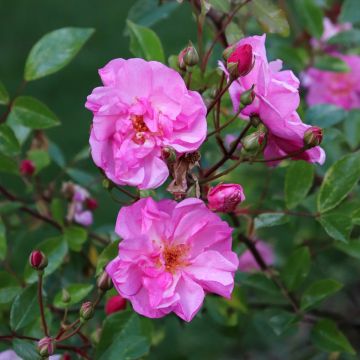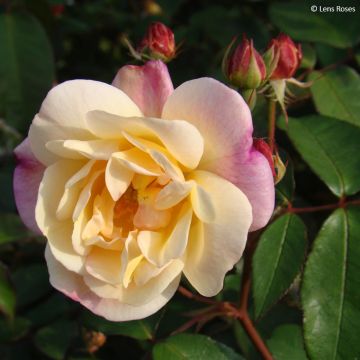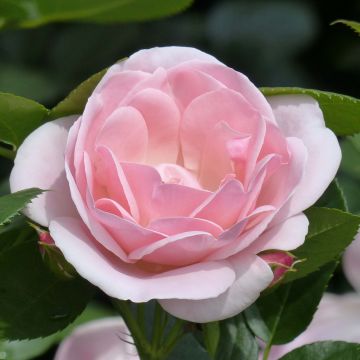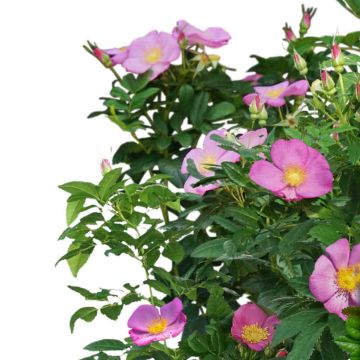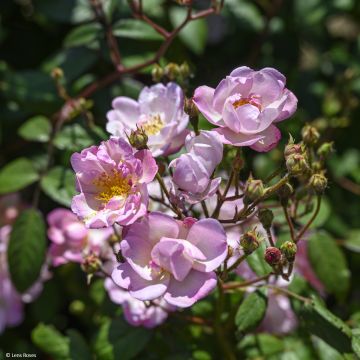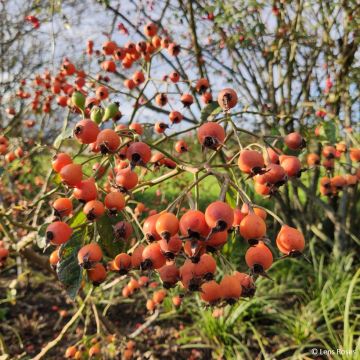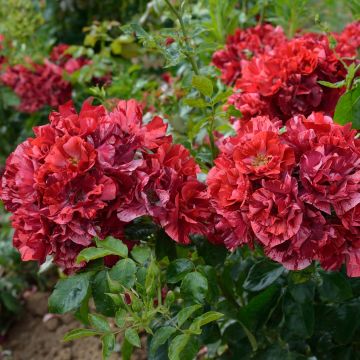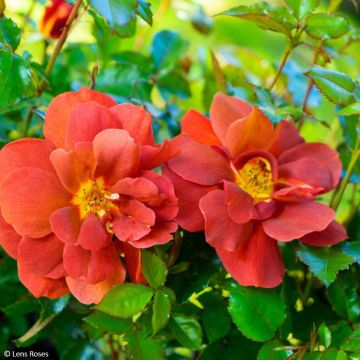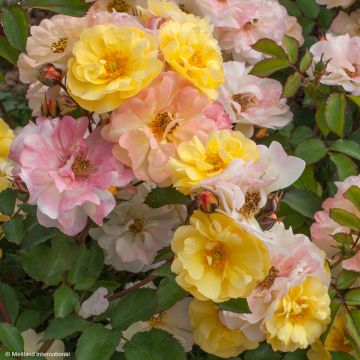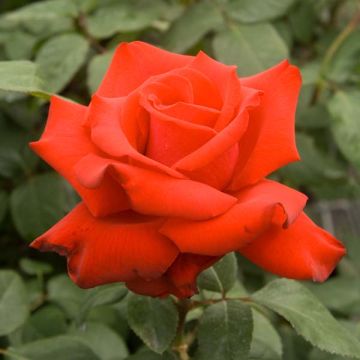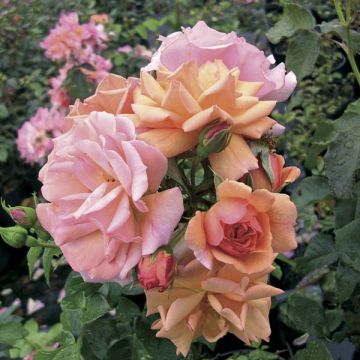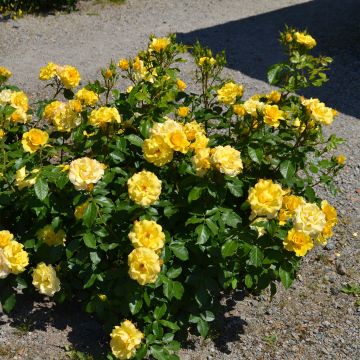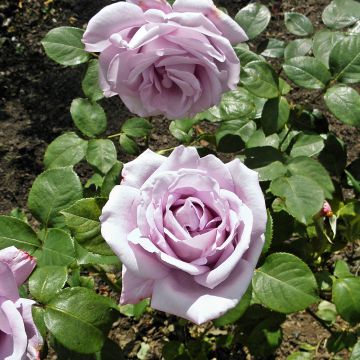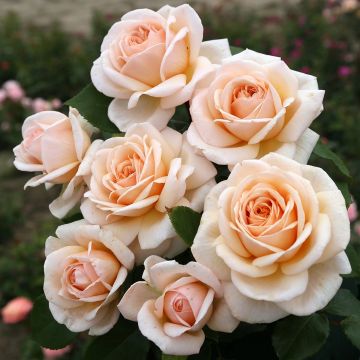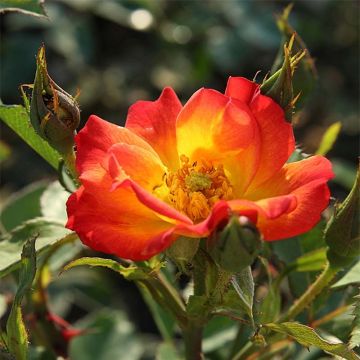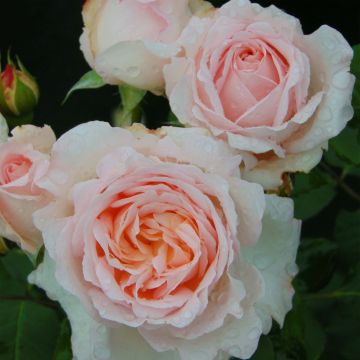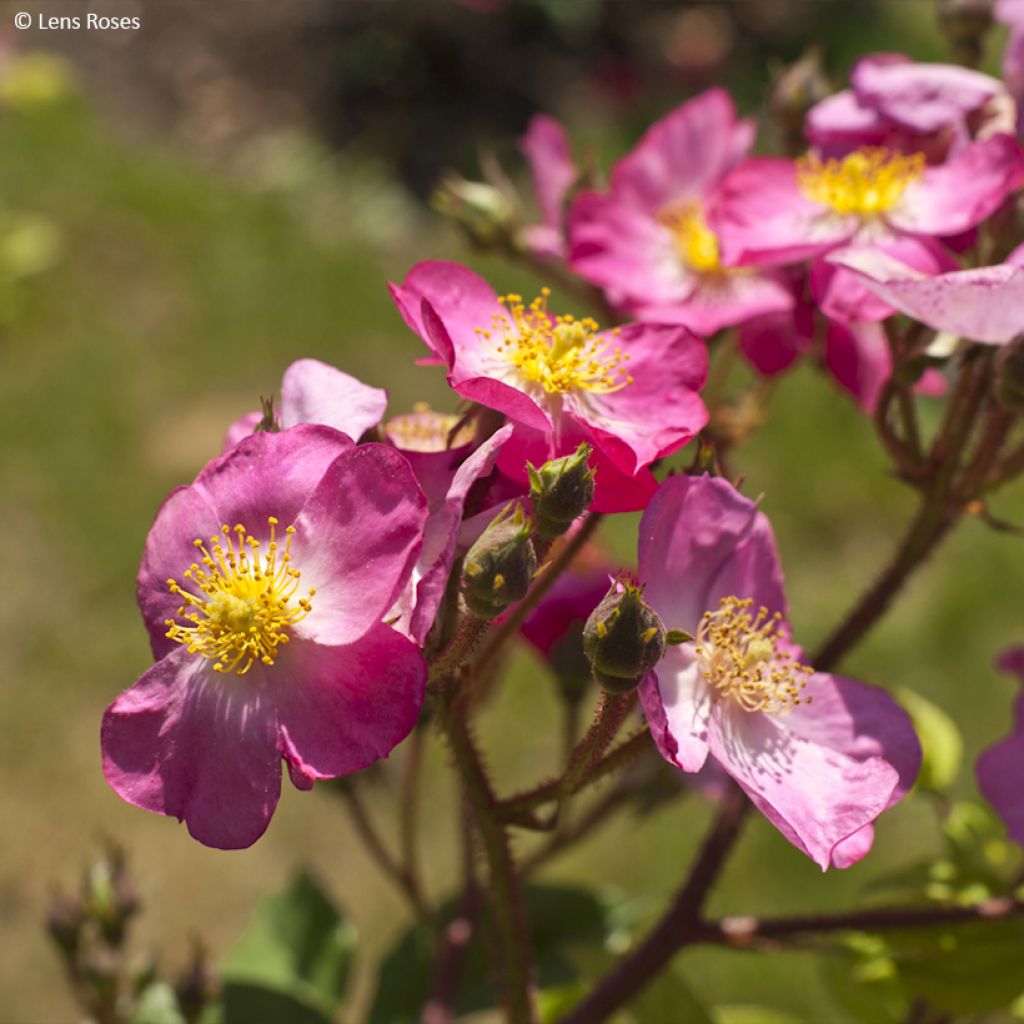

Rosa x moschata 'Rosy Purple' - Shrub Rose
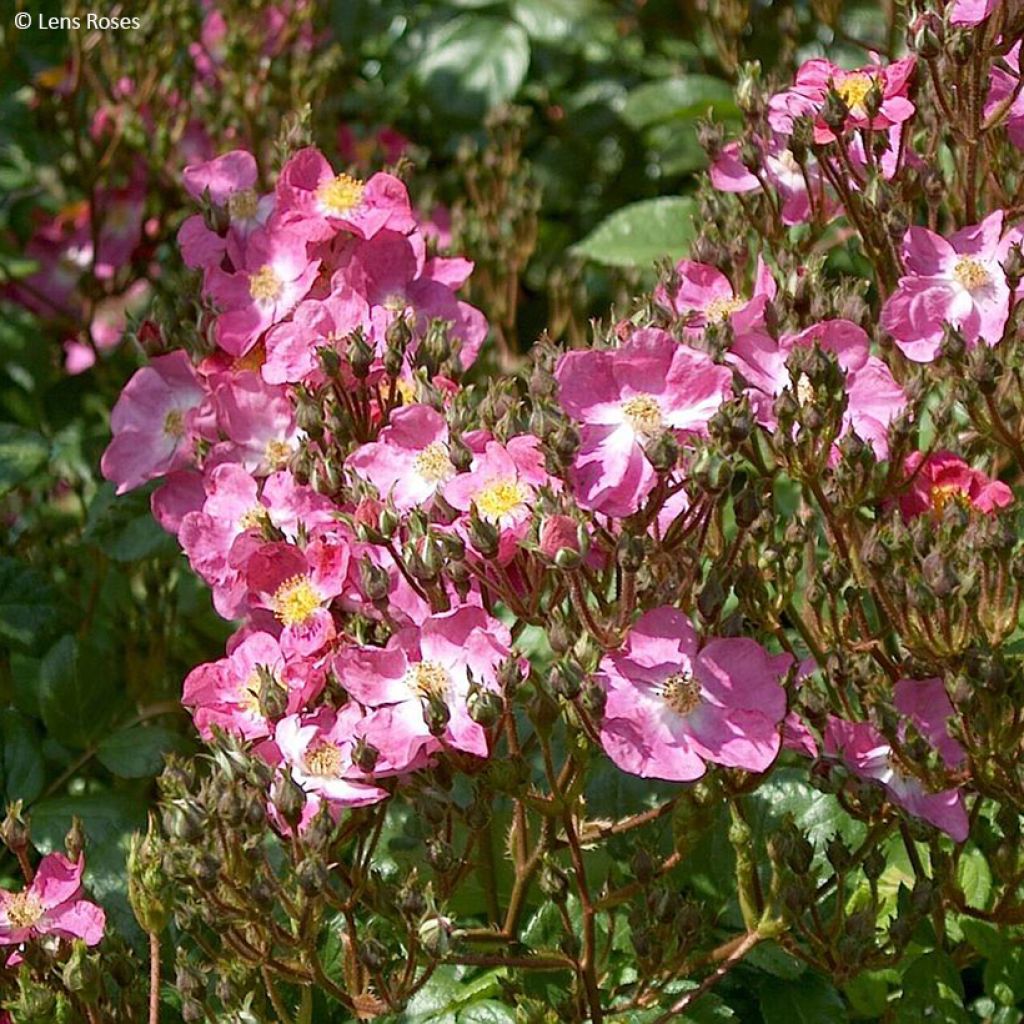

Rosa x moschata 'Rosy Purple' - Shrub Rose
Rosa x moschata 'Rosy Purple' - Shrub Rose
Rosa x moschata Rosy Purple® 'LENdora'
LENdora
This item cannot be shipped to the selected country
Delivery charge from €5.90
Delivery charge from €5.90
More information
Schedule delivery date,
and select date in basket
This plant carries a 24 months recovery warranty
More information
We guarantee the quality of our plants for a full growing cycle, and will replace at our expense any plant that fails to recover under normal climatic and planting conditions.
From €5.90 for pickup delivery and €6.90 for home delivery
Express home delivery from €8.90.
From €5.90 for pickup delivery and €6.90 for home delivery
Express home delivery from €8.90.
Does this plant fit my garden?
Set up your Plantfit profile →
Description
The 'Rosy Purple' shrub rose is an obscure, original hybrid of the musk rose that has many advantages. From late spring to early autumn, this variety produces a multitude of small flowers gathered in large scented bouquets. Their color is a nuanced deep red with hints of pink, surrounding a bouquet of well-presented golden stamens for bees. From late summer, the bush is adorned with sought-after small orange hips for birds. Planted in isolation, in a hedge or in a bed, this rose is perfect. Its flexible stems can also be trained along a trellis, obelisk or pyramid.
The Rosy Purple 'LENdora' rose is a creation by L. Lens dating back to 1995. It is derived, among other things, from the musk rose (Rosa (x) moschata), a spontaneous hybrid probably originating from Asia Minor or the Middle East. A bit like polyanthas and floribundas, roses in this family produce flowers gathered in bouquets, but their colors are more refined and they have a more flexible and graceful habit. 'Rosy Purple' exhibits rapid growth and a slightly spreading bushy habit, fanning out. Ultimately, this shrub reaches a height of 1m (3ft) to 1.25m (4ft) with a spread of 1m (3ft). Its flexible and thorny stems are brownish. They produce brown young shoots. The leaves are divided into dark green leaflets. Flowering begins in June, and continues until October if the soil does not dry out too much and if care is taken to remove faded flowers as they appear. The flowers form pyramidal clusters composed of hundreds of small 3cm (1in) diameter single flowers. The pedicels that bear the flowers are brownish and adorned with tiny prickles. The flower color transitions from lilac red to deep pink to rose. The center of the corolla is occupied by yellow stamens with a sweet and aromatic fragrance. They are highly visited by bees and other pollinators. If faded flowers are not removed from mid-July onwards, this rose produces small decorative fruits from September. Its hardiness is estimated at around -15 °C (5°F). The deciduous foliage is absent in winter.
The 'Rosy Purple' shrub rose will delight gardening enthusiasts who appreciate beautiful plants that align with an ecological approach. It thrives in well-prepared soil and requires no pruning except for the removal of older branches or dead wood at the end of winter. Its natural appearance and colorful flowering will be welcome in a small flowering hedge or in a bed with other landscape roses, along with perennials such as peonies, iris and tall phlox. If used as a small climber, it can be paired with a small double clematis such as 'Diamantina' or 'Multi Pink', for example.
Report an error about the product description
Plant habit
Flowering
Foliage
Botanical data
Rosa
x moschata
Rosy Purple® 'LENdora'
Rosaceae
LENdora
Cultivar or hybrid
Other Landscape shrub Roses
Planting and care
The Rosebush 'Rosy Purple' should be planted in a sunny spot. However, it can also tolerate partial shade, especially in the sunniest and hottest regions. It can adapt to any garden if the soil is well-worked and sufficiently rich. To plant your rose bush, first, crumble the soil and place an amendment, such as blood, fish and bone, at the bottom of the planting hole. After planting, water generously to eliminate any air pockets. For a few weeks, water regularly to facilitate rooting. When it comes to pruning, you only need to remove dead wood and thin out the centre of the bush by pruning crossing branches. As the flowering progresses, remove faded flowers to stimulate the development of other buds.
Rose bushes may become stained or unsightly in late summer, but this is a natural occurrence that does not harm the plant's growth or health.
Planting period
Intended location
Care
This item has not been reviewed yet - be the first to leave a review about it.
Roses by producer
Haven't found what you were looking for?
Hardiness is the lowest winter temperature a plant can endure without suffering serious damage or even dying. However, hardiness is affected by location (a sheltered area, such as a patio), protection (winter cover) and soil type (hardiness is improved by well-drained soil).

Photo Sharing Terms & Conditions
In order to encourage gardeners to interact and share their experiences, Promesse de fleurs offers various media enabling content to be uploaded onto its Site - in particular via the ‘Photo sharing’ module.
The User agrees to refrain from:
- Posting any content that is illegal, prejudicial, insulting, racist, inciteful to hatred, revisionist, contrary to public decency, that infringes on privacy or on the privacy rights of third parties, in particular the publicity rights of persons and goods, intellectual property rights, or the right to privacy.
- Submitting content on behalf of a third party;
- Impersonate the identity of a third party and/or publish any personal information about a third party;
In general, the User undertakes to refrain from any unethical behaviour.
All Content (in particular text, comments, files, images, photos, videos, creative works, etc.), which may be subject to property or intellectual property rights, image or other private rights, shall remain the property of the User, subject to the limited rights granted by the terms of the licence granted by Promesse de fleurs as stated below. Users are at liberty to publish or not to publish such Content on the Site, notably via the ‘Photo Sharing’ facility, and accept that this Content shall be made public and freely accessible, notably on the Internet.
Users further acknowledge, undertake to have ,and guarantee that they hold all necessary rights and permissions to publish such material on the Site, in particular with regard to the legislation in force pertaining to any privacy, property, intellectual property, image, or contractual rights, or rights of any other nature. By publishing such Content on the Site, Users acknowledge accepting full liability as publishers of the Content within the meaning of the law, and grant Promesse de fleurs, free of charge, an inclusive, worldwide licence for the said Content for the entire duration of its publication, including all reproduction, representation, up/downloading, displaying, performing, transmission, and storage rights.
Users also grant permission for their name to be linked to the Content and accept that this link may not always be made available.
By engaging in posting material, Users consent to their Content becoming automatically accessible on the Internet, in particular on other sites and/or blogs and/or web pages of the Promesse de fleurs site, including in particular social pages and the Promesse de fleurs catalogue.
Users may secure the removal of entrusted content free of charge by issuing a simple request via our contact form.
The flowering period indicated on our website applies to countries and regions located in USDA zone 8 (France, the United Kingdom, Ireland, the Netherlands, etc.)
It will vary according to where you live:
- In zones 9 to 10 (Italy, Spain, Greece, etc.), flowering will occur about 2 to 4 weeks earlier.
- In zones 6 to 7 (Germany, Poland, Slovenia, and lower mountainous regions), flowering will be delayed by 2 to 3 weeks.
- In zone 5 (Central Europe, Scandinavia), blooming will be delayed by 3 to 5 weeks.
In temperate climates, pruning of spring-flowering shrubs (forsythia, spireas, etc.) should be done just after flowering.
Pruning of summer-flowering shrubs (Indian Lilac, Perovskia, etc.) can be done in winter or spring.
In cold regions as well as with frost-sensitive plants, avoid pruning too early when severe frosts may still occur.
The planting period indicated on our website applies to countries and regions located in USDA zone 8 (France, United Kingdom, Ireland, Netherlands).
It will vary according to where you live:
- In Mediterranean zones (Marseille, Madrid, Milan, etc.), autumn and winter are the best planting periods.
- In continental zones (Strasbourg, Munich, Vienna, etc.), delay planting by 2 to 3 weeks in spring and bring it forward by 2 to 4 weeks in autumn.
- In mountainous regions (the Alps, Pyrenees, Carpathians, etc.), it is best to plant in late spring (May-June) or late summer (August-September).
The harvesting period indicated on our website applies to countries and regions in USDA zone 8 (France, England, Ireland, the Netherlands).
In colder areas (Scandinavia, Poland, Austria...) fruit and vegetable harvests are likely to be delayed by 3-4 weeks.
In warmer areas (Italy, Spain, Greece, etc.), harvesting will probably take place earlier, depending on weather conditions.
The sowing periods indicated on our website apply to countries and regions within USDA Zone 8 (France, UK, Ireland, Netherlands).
In colder areas (Scandinavia, Poland, Austria...), delay any outdoor sowing by 3-4 weeks, or sow under glass.
In warmer climes (Italy, Spain, Greece, etc.), bring outdoor sowing forward by a few weeks.

































